|
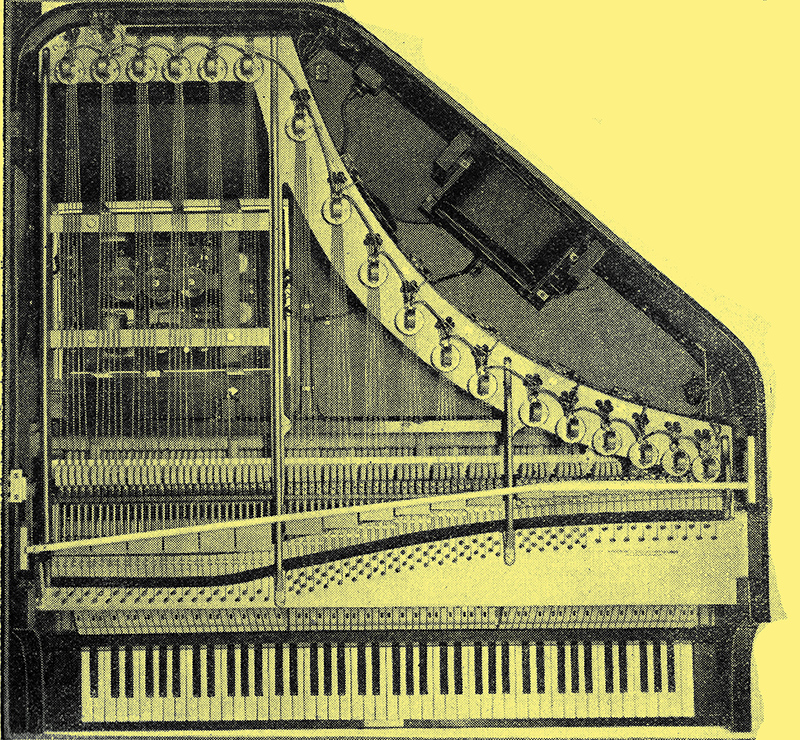
The Neo-Bechstein, seen from above. Note the array of small electro-magnets, each taking charge of five notes. The vibrations set up in the strings are transferred through the magnets to the amplifier, seen beneath the bass strings, and thence to a loud speaker.
The Neo-Bechstein electrical pianoforte, which may shortly make its appearance on the British market, is here described by a correspondent who has both heard and played the instrument in Germany. Of special interest is the wide variation in apparent tone colour, ranging from spinet effects to those of the organ, saxophone and banjo.
During a recent visit to Berlin the writer enjoyed the opportunity of hearing the Neo-Bechstein piano specially demonstrated and also of examining and playing it himself. The instrument looks like a small grand piano, with absolutely normal keyboard and touch, together with a separate loud speaker.
Nothing could be more simple in its essentials: a steel string is struck as in the case of a normal piano, and vibrates within the field of an electro-magnet (one such taking care of five notes). The resulting electrical impulses in the coils of this are then amplified and fed to the loud speaker, the degree of amplification being controlled by the left pedal.
Normal Piano Technique
The refinements are, in fact, chiefly mechanical. First, the string need vibrate only to a very small extent, since it has to produce very little energy; hence it can be shorter, lighter, and less tensioned than the normal. Double strings are used only in part of the middle register, triple ones not at all. This, of course, implies a lighter framework, also a lighter hammer. In order, however, not to change the normal piano technique, hammers of the usual weight are used, but these do not hit the string directly, but a bar nearby, and this impact drives a tiny hammer, perhaps one-twentieth the weight of a normal one, up to hit the string itself. Incidentally, the tone is purer owing to the reduced amplitude of the vibrations.
Again, as the strings are giving off practically no energy, their damping is greatly reduced; a bass string will vibrate for something like a minute after striking. This, together with the fact that the sound after striking, can be increased or decreased by the use of the pedal, opens up new possibilities of an organ-like nature. (One of the weak points of the instrument - perhaps the only serious one - is that these prolonged notes are only fully available in the bass. the treble strings coming to rest almost too soon; consequently, sustained chords lack brilliancy.
Double control of damping is fitted. First, there is the usual right pedal which, when released, causes immediate damping, and, when depressed, allows the string to vibrate naturally till it comes to rest; and, secondly, there is a special damper acting on all the strings, which, when 'off' allows the vibration to continue to its maximum (over a minute in the bass, as already mentioned), and when 'on' reduces it to a period comparable to that of a normal piano - this in order that existing piano music may be readily available for the new instrument.
As already stated, the left pedal controls the degree of amplification. When it is released, the loud speaker is out of action, and the instrument becomes the most charming spinet-harpsichord imaginable. When it is fully depressed, the volume is overwhelming, but here again there is a double control, an auxiliary knob reducing the maximum volume available to suit the room in which the instrument is to be used. This control is, of course, never changed except with a transfer to other surroundings, the pedal doing all the controlling during playing.
It may be added that the instrument also contains a complete wireless receiver and an electrical gramophone, and costs just a trifle less than the cheapest Bechstein grand. It works from the AC mains.
Apparent Tone Variations
What was particularly interesting to the writer was to hear how much variation in the apparent tone-colour could be produced by combinations of touch and pedalling. The demonstrator was, of course, not only a first-class pianist, but had also specialised in the new instrument. He produced (in playing a set of very jolly variations written by himself) a series of effects ranging from the spinet through the piano to the organ, and thence to an excellent bassoon, trumpet, saxophone, and banjo, which would have appeared quite impossible with such limited means. It must be emphasised that no true tone colour control exists, as, for example, in the case of the Trautonium.
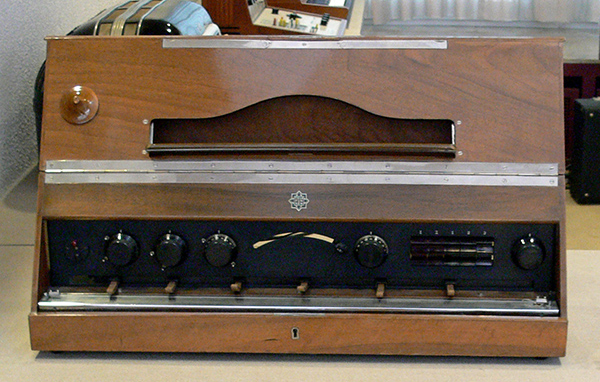
The 1933 Trautonium. Check Wikipedia for more details of this synthesiser.
Instead of a keyboard, the Trautonium manual is made of a resistor wire over a metal plate, which is pressed to create a sound. Expressive playing was possible with this wire by gliding on it, creating vibrato with small movements. Volume was controlled by the pressure of the finger on the wire and board. The first Trautoniums were marketed by Telefunken from 1933 until 1935 (200 were made). (Wikipedia)
2022
Having found the 1933 article some research was conducted into the Neo-Bechstein and Wikipedia has a good write-up. Some images were found and an original 1933 recording.
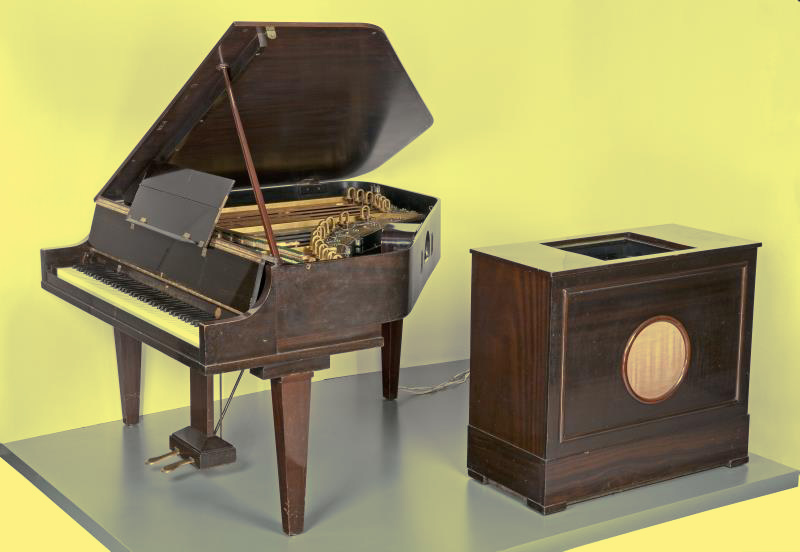
The electric piano with speaker cabinet. The latter houses the record player at the top.
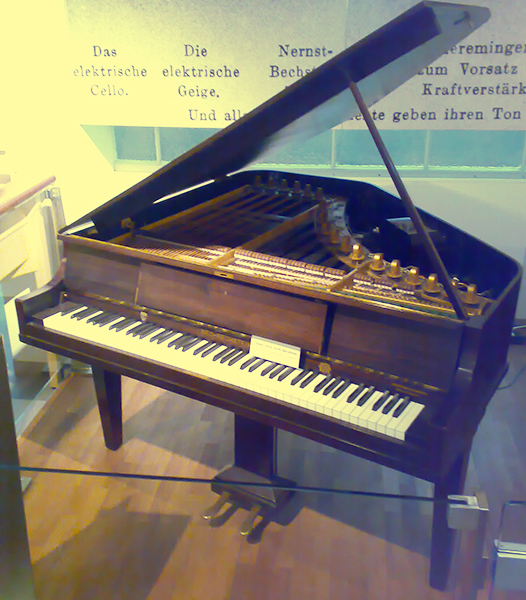
With the top lifted.
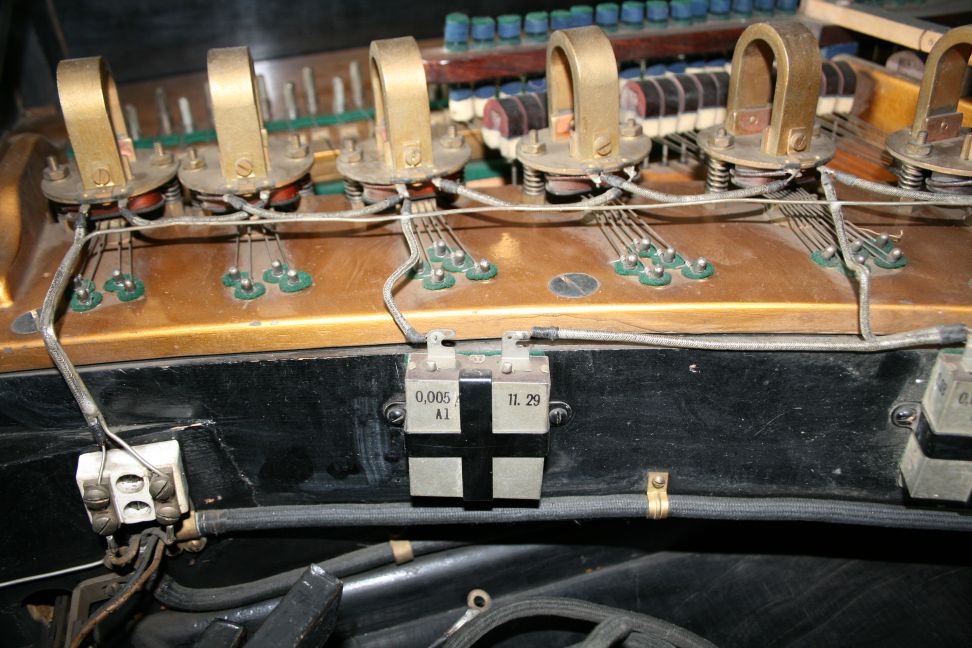
The pick-up arrangement.
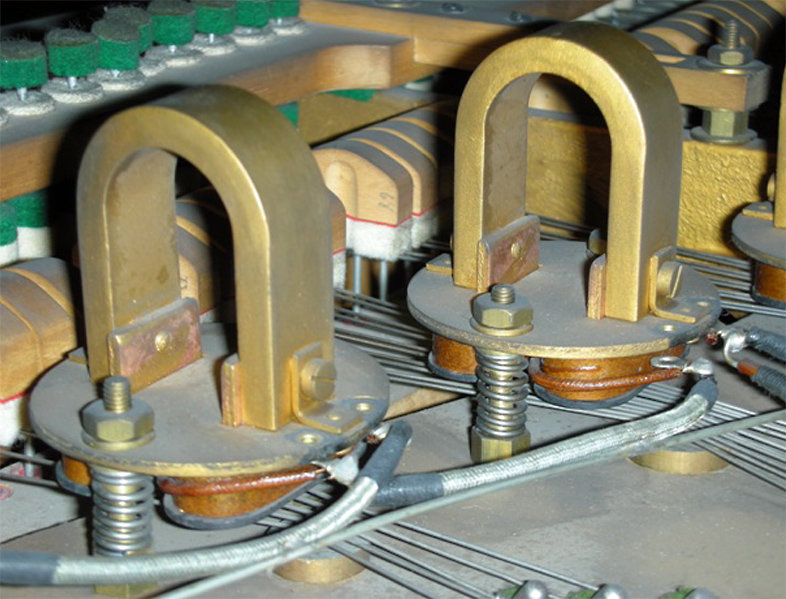
A closer view.
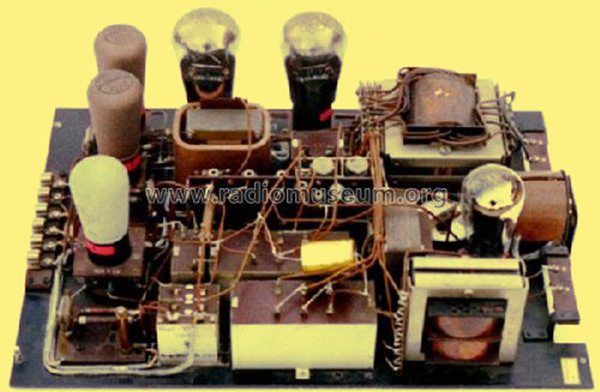
The amplifier. Image courtesy Radiomuseum.
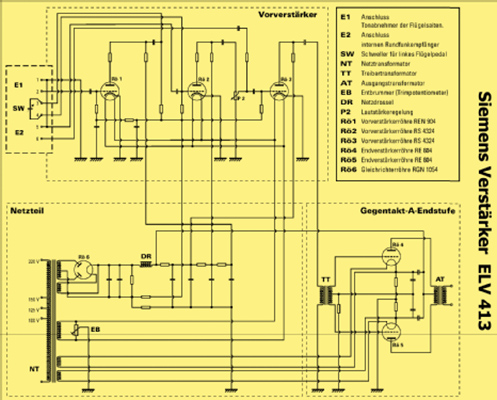
The amplifier with transformer coupled push-pull triode output.
The Neo-Bechstein piano was designed by physicist and Nobel prize winner Walter Nernst, and was manufactured as a collaboration between Siemens & Halske AG, founded in 1847, and the C. Bechstein Pianofortefabrik AG, established in 1853. Utilising what is essentially a conventional grand piano action, the Neo-Bechstein piano had no soundboard, but instead had the strings mounted over a series of electromagnetic pickups, which are in turn connected to an amplifier and speaker. The pickups consist of a horseshoe magnet that is positioned over two coils of wire. (Matthew William Hill PhD, The University of Edinburgh 2013. George Beauchamp and the rise of the electric guitar up to 1939.)
|